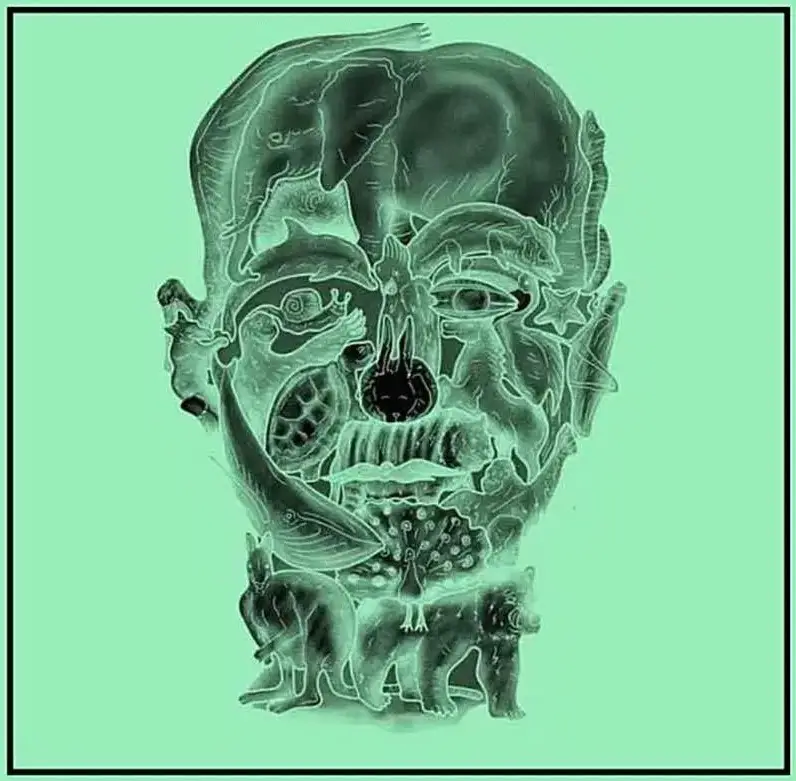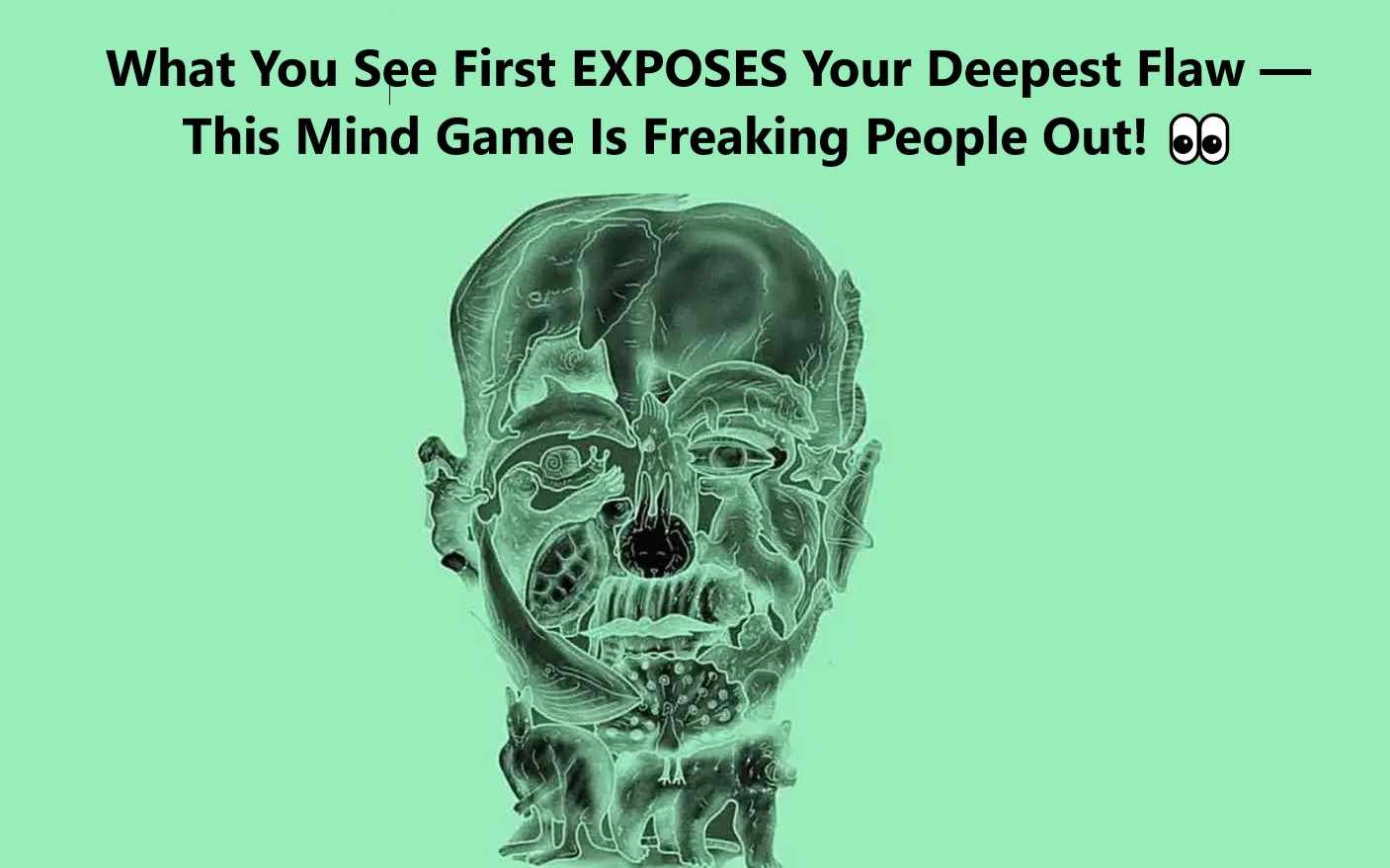You’ve probably seen them flooding your social media feeds: complex optical illusions featuring multiple animals hidden within a single image, promising to reveal deep insights about your personality based on which creature you spot first. These viral visual perception tests have captivated millions, sparking conversations and self-reflection across digital platforms. But what’s really happening when we take these tests, and should we trust their results?
The Science of Seeing: How Visual Perception Works
Visual perception tests operate on a fascinating psychological principle called “figure-ground perception.” When we look at complex or ambiguous images, our brains automatically prioritize certain visual elements over others. This process isn’t random—it’s influenced by our cognitive patterns, current emotional state, past experiences, and yes, potentially even aspects of our personality.
These tests draw inspiration from established psychological tools like the famous Rorschach inkblot test, where ambiguous stimuli are used to elicit responses that might reflect underlying psychological patterns. The key difference? Those clinical assessments undergo rigorous scientific validation, while viral visual tests remain in the realm of entertainment.
Decoding the Animals: What Each First Impression Supposedly Means
The typical visual perception test presents a complex illustration where multiple animals are cleverly integrated into what initially appears to be a human face silhouette. Each animal comes with its own personality interpretation:

(What You See First EXPOSES Your Deepest Flaw)
The Steady Giants
Elephant: If you spot the elephant first, you’re supposedly someone with strong convictions who rarely changes their mind. While this suggests loyalty and protective instincts, it might also indicate difficulty seeing alternative perspectives.
Bear: Bear-spotters are characterized as comfort-zone dwellers who prefer familiar environments and resist change. This pattern suggests reliability and protective instincts, but potentially limited adaptability.
Horse: Initial horse recognition indicates strong self-reliance and pride. These individuals are independent and courageous but may struggle with asking for help or acknowledging limitations.
The Water Dwellers
Dolphin: Dolphin-seers are creative and socially engaged but tend toward impulsive decision-making. They excel in interpersonal relationships but might benefit from more strategic planning.
Whale: Whale perception suggests introspective individuals who prefer to avoid conflict. While they’re deep thinkers who seek peace, they may struggle with direct communication during disagreements.
Turtle: Those who first see a turtle are methodical decision-makers who value stability over rapid change. They possess strong analytical skills but might struggle in situations requiring quick adaptation.
The Strategic Survivors
Snake: Snake-spotters are advanced strategic thinkers with strong situational analysis skills. However, they may tend toward emotional detachment or manipulative behaviors.
Fox: Fox perception indicates high adaptability and problem-solving abilities, but potentially with a tendency to avoid responsibility or commitment.
The Social Signals
Toucan: Toucan-seers desire social recognition and tend to prioritize external validation. They have strong charisma and social skills but may need to develop authentic self-worth.
Rabbit: Rabbit recognition suggests heightened sensitivity and empathy, combined with vulnerability to criticism. These individuals have strong emotional intelligence but may need to develop confidence and assertiveness.
Why We’re So Drawn to These Tests
The popularity of visual perception assessments isn’t accidental. They tap into several powerful psychological drivers:
Instant Gratification: Unlike lengthy personality questionnaires, these tests provide immediate results with minimal effort. In our fast-paced digital world, this accessibility is incredibly appealing.
Self-Discovery Hunger: Humans have an innate curiosity about their own personalities and behaviors. These tests offer what feels like an objective window into our inner selves, even when the science is questionable.
Social Connection: These assessments create perfect opportunities for social interaction. Sharing results, comparing interpretations, and discussing findings with friends strengthens social bonds and provides common ground for conversation.
Confirmation Bias Comfort: Many people find that test results align with their existing self-perceptions or offer intriguing new perspectives on their personality traits. This alignment creates a sense of accuracy and validation, regardless of actual scientific validity.
The Reality Check: Scientific Limitations
While these tests are undeniably entertaining, it’s crucial to understand their limitations:
No Standardization: Unlike legitimate psychological assessments, these tests lack standardized administration procedures, consistent scoring methods, or normative data to support reliable interpretation.
Missing Empirical Evidence: There’s no peer-reviewed research demonstrating that initial animal perception correlates with actual personality characteristics or behavioral patterns.
Reliability Questions: Your results might vary dramatically from day to day or even hour to hour, influenced by factors like mood, fatigue, or recent experiences—hardly the consistency expected from valid personality assessment.
Cultural and Individual Variables: Visual perception is heavily influenced by cultural background, artistic exposure, educational experience, and current emotional state, introducing variables that undermine interpretation accuracy.
The Positive Side: Benefits Beyond Science
Despite their scientific limitations, these visual perception tests aren’t entirely without value when approached appropriately:
Catalyst for Self-Reflection: While the interpretations may not be scientifically valid, they can prompt meaningful self-examination about personality traits, behavioral patterns, and areas for personal growth.
Educational Opportunities: These tests can spark valuable discussions about psychology, critical thinking, and the importance of scientific validation in psychological assessment.
Harmless Entertainment: When taken with appropriate skepticism, these assessments provide fun social entertainment and conversation starters without causing harm.
Gateway to Psychology: For many people, these viral tests serve as an introduction to psychological concepts, potentially inspiring deeper interest in legitimate personality psychology and mental health.
Making Sense of the Phenomenon
The enduring appeal of visual perception tests reveals something profound about human nature: our deep-seated desire for self-understanding and social connection. In an era of increasing digital interaction, these simple tests provide a shared experience that transcends cultural and geographic boundaries.
They also highlight the importance of psychological literacy in our society. As these tests continue to proliferate, understanding the difference between entertainment-based assessments and scientifically validated psychological tools becomes increasingly crucial.
The Bottom Line
Visual perception tests occupy a unique space in our digital culture—they’re simultaneously scientifically questionable and psychologically fascinating. They demonstrate the power of visual processing, the appeal of personality exploration, and the human need for social connection, all wrapped up in a shareable digital package.
While these tests shouldn’t be considered legitimate personality assessments, they serve an important function as modern conversation starters and tools for self-reflection. The key is approaching them with the right mindset: enjoy the experience, engage in meaningful discussions with others, and use any insights as starting points for deeper self-examination rather than definitive personality diagnoses.
For those genuinely interested in understanding their personality traits and behavioral patterns, professionally administered, scientifically validated assessments conducted by qualified mental health professionals remain the gold standard. But for a few minutes of entertaining self-reflection and social bonding? These viral visual tests continue to serve their purpose remarkably well.
The next time one of these tests appears in your social media feed, go ahead and take it—just remember that the most valuable insights might come not from the results themselves, but from the conversations and self-reflection they inspire along the way.

